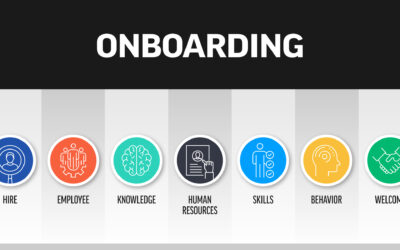The last thing businesses want to do is to invest in poor-performing employees. This can be costly, and although a high turnover rate is expensive, so is keeping a poor-performing employee on staff. So, how do you implement some efficient hiring practices? Here are a few strategies.
Recruiting
Your online job posting is crucial in hiring and retaining successful candidates. Your job descriptions need to be clear, concise, carefully worded, and targeted. Simply noting the technology needed, basic duties and salary range won’t cut it.
When writing the job description, carefully consider the abilities, personality traits and attitude needed for the job. It’s best you consider the importance of company culture and find ways to accurately reflect the culture in your job posting. Let job seekers know what your organization is all about.
Be prepared for the interview
The interview process starts with you—the interviewer. Poor preparation almost always will lead to poor performance when conducting interviews. Inadequate planning for the interview wastes time and money—while also deterring successful candidates from the company. To establish a stronger interview style—one where it feels more relaxed and flowing—you should be sure to:
- Review the candidate’s resume ahead of time. By reviewing the resume ahead of time, you can plan your questions, look for warning signs and appear more confident and professional.
When reading resumes, pay close attention to:
- Dates of employment—Look for any gaps between jobs and analyze the number of jobs held. Be prepared to ask the candidate about these gaps.
- Career progression—Check out the detailed responsibilities the candidate includes per job. How will these skills be of value to your team? In the same manner, be sure the resume includes detailed information about the job, not just the job title.
The wrong questions
Once you’ve found a few potential candidates that you think would be a good fit, call them in for an interview!
Don’t do all the talking! Use this interview as an opportunity for the candidates to talk about themselves and their accomplishments. Utilize open-ended questions that begin with statements such as “Tell me about a time when …” or “Give me an example of … .” Be sure that every question is job relevant.
Sample interview questions
- Tell me about a time when you became frustrated/disappointed at work.
- What would be your ideal job or career?
- Who was your best boss and why?
- What do you like and dislike about this position?
- The hours are ____ to ___. Would you have a problem with these hours?
- Why did you leave? Where did you go? Who supervised you?
- Would you be willing to work in-house, remotely or a hybrid schedule? Which do you prefer?
Remember, know what you are looking for in the answers. Use your current employees as benchmarks of both success and improvement.
The offer letter: Double check the details!
Sealing the deal on the phone is increasingly becoming the norm. Still, it’s important to put the offer in writing and email it to your new hire. Not only will your new employee feel valued and needed, but this simple step will help make sure that the details are clearly understood from both sides.
Want to learn more about recruiting the top talent to your agency?
PIA Northeast offers members access to its Agency Staffing Assistance Program, which offers resources to help you recruit, hire and train your new employees.
You can see the July/August 2022 issue of PIA Magazine, which focus on attracting the next generation of insurance professionals.
There are several resources that are available in the PIA QuickSource library:
Avoid common hiring mistakes to select top talent
Personality and aptitude assessment firms
Strategies for hiring and retaining talent
Welcoming a new employee into your company—an orientation plan is essential

Shirley Albright, CPIA, CISR
Shirley Albright, CPIA, CISR, joined PIA in 1983 and has worked in many facets of the association over the years. In 1995, she was an integral part of establishing the Industry Resource Center to include the development of the software system to record and track all incoming and outgoing inquiries. She quickly moved from industry resource representative to assistant director and eventually to her current position as director. Currently, Shirley oversees the daily operations of the Industry Resource Center to include the triage of thousands of incoming member inquiries. Her other accomplishments include obtaining her New York state property/casualty broker’s license, CPIA and CISR designations.






